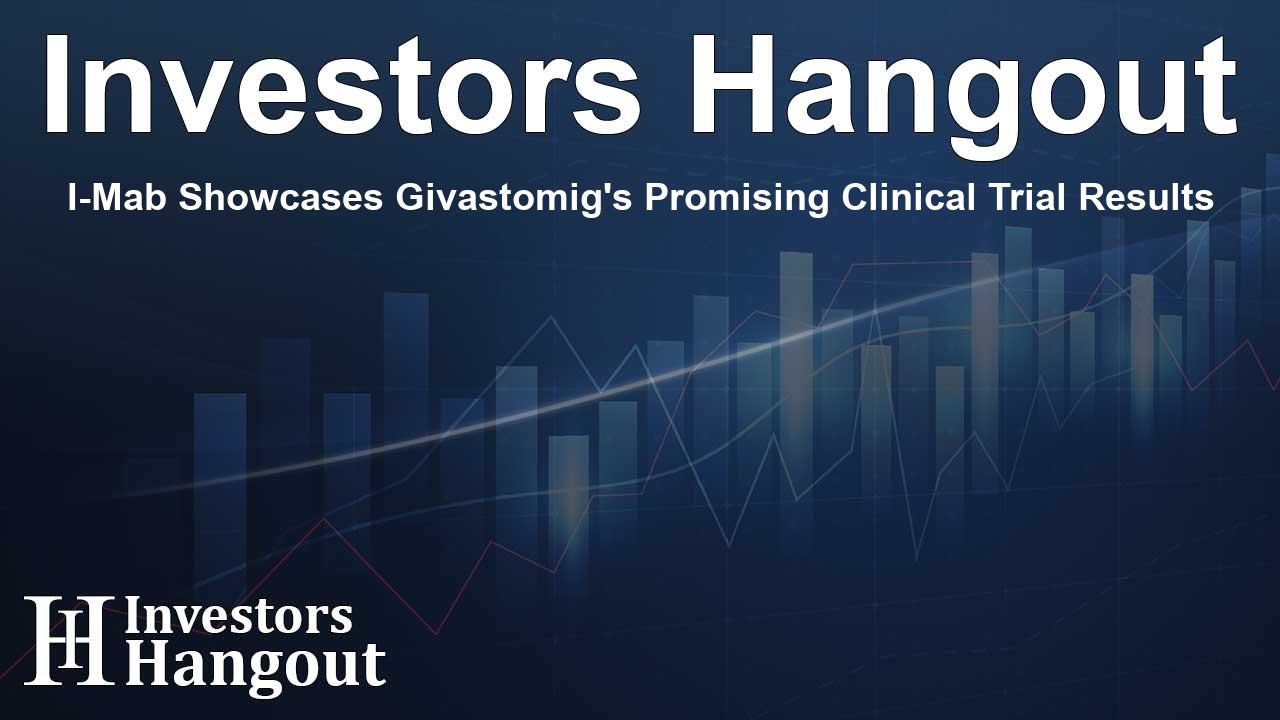I-Mab Showcases Givastomig's Promising Clinical Trial Results

Exciting Developments from I-Mab's Givastomig Trials
I-Mab, a cutting-edge biotech company, recently presented updated data from its Phase 1 clinical study of givastomig, a unique bispecific antibody designed to treat gastric cancers expressing Claudin 18.2. At the highly regarded ESMO Congress 2024, these findings showcased the therapeutic potential of givastomig, particularly in patients who have undergone extensive prior treatments.
Study Highlights: Efficacy and Safety Profile
The expanded Phase 1 monotherapy study highlighted promising results. Givastomig exhibited significant single-agent activity among heavily pre-treated patients with gastric cancer, whether Claudin 18.2 was expressed at low or high levels. One of the standout findings was that the recommended Phase 2 dosage for the drug is between 8-12 mg/kg, with the treatment well-tolerated by participants up to the highest study doses.
Unprecedented Potential for Gastric Cancer Patients
Dr. Phillip Dennis, Chief Medical Officer of I-Mab, expressed confidence in givastomig's prospects, emphasizing its potential as a leading front-line treatment option for gastric cancer. The ongoing Phase 1b study, which examines the combination of givastomig with established treatment regimens, reflects the enthusiasm surrounding the drug's development.
Investigating Combination Therapies
The current Phase 1b study is actively evaluating the combination of givastomig with standard-of-care treatments, including nivolumab and chemotherapy (FOLFOX). This collaboration could enhance treatment efficacy for patients battling advanced gastric cancer. Data presented at ESMO 2024 supports the notion that givastomig can achieve significant results even in patients who have previously received other checkpoint inhibitors.
Clinical Insights and Data Analysis
The comprehensive analysis of the Phase 1 study included 43 participants with advanced gastroesophageal carcinoma (GEC) whose tumors were confirmed to be Claudin 18.2-positive. The results were revealing: out of the cohort, a partial response was observed in seven patients, yielding an objective response rate of 16.3%. Moreover, stable disease occurred in 14 additional patients, contributing to a disease control rate of 48.8%.
Monitoring Treatment-Related Adverse Events
Throughout the clinical trial, no dose-limiting toxicities were noted, even at doses as high as 15 mg/kg administered bi-weekly and 18 mg/kg tri-weekly. The majority of treatment-related adverse events were classified as grade 1 or 2, demonstrating a favorable safety profile for the drug.
Understanding Givastomig's Mechanism
Givastomig operates by targeting Claudin 18.2-positive tumor cells, effectively activating T cells in the tumor microenvironment via the 4-1BB pathway. This selective mechanism positions it advantageously among existing Cladin 18.2 therapies, particularly given its ability to elicit immune responses even in tumors with minimal exposure to the protein.
Givastomig: A Promising Future
In addition to its current clinical initiatives, Givastomig received Orphan Drug Designation from the FDA for treating gastric cancer. This designation supports the expedited development process for promising new therapies that address unmet medical needs. As ongoing studies progress, I-Mab and its partners are keen to further explore the drug's combination potential and refine treatment approaches.
About I-Mab and Its Mission
I-Mab is committed to advancing highly differentiated immunotherapies for cancer treatment. With a robust portfolio, the company emphasizes innovation and collaboration through partnerships, ensuring its therapies reach those who need them the most. As they continue to unveil results from clinical studies, attention remains focused on the transformative possibilities of givastomig in cancer care.
Frequently Asked Questions
What is givastomig?
Givastomig is a bispecific antibody targeting Claudin 18.2-positive tumors, designed to activate T cells in the tumor microenvironment.
What patients are eligible for the givastomig study?
Patients with advanced gastroesophageal carcinoma expressing Claudin 18.2 are eligible to participate in the ongoing clinical trials.
What were the main findings from the ESMO 2024 presentation?
The findings indicated encouraging efficacy signals and a favorable safety profile for givastomig among heavily pre-treated gastric cancer patients.
How does givastomig compare to other treatments?
Givastomig demonstrates unique mechanisms of action and is showing promise in eliciting responses even in patients with low levels of Claudin 18.2.
What are the next steps for I-Mab's research on givastomig?
I-Mab plans to continue evaluating givastomig in combination with standard-of-care treatments and is looking forward to upcoming results in the near future.
About Investors Hangout
Investors Hangout is a leading online stock forum for financial discussion and learning, offering a wide range of free tools and resources. It draws in traders of all levels, who exchange market knowledge, investigate trading tactics, and keep an eye on industry developments in real time. Featuring financial articles, stock message boards, quotes, charts, company profiles, and live news updates. Through cooperative learning and a wealth of informational resources, it helps users from novices creating their first portfolios to experts honing their techniques. Join Investors Hangout today: https://investorshangout.com/
Disclaimer: The content of this article is solely for general informational purposes only; it does not represent legal, financial, or investment advice. Investors Hangout does not offer financial advice; the author is not a licensed financial advisor. Consult a qualified advisor before making any financial or investment decisions based on this article. The author's interpretation of publicly available data shapes the opinions presented here; as a result, they should not be taken as advice to purchase, sell, or hold any securities mentioned or any other investments. The author does not guarantee the accuracy, completeness, or timeliness of any material, providing it "as is." Information and market conditions may change; past performance is not indicative of future outcomes. If any of the material offered here is inaccurate, please contact us for corrections.